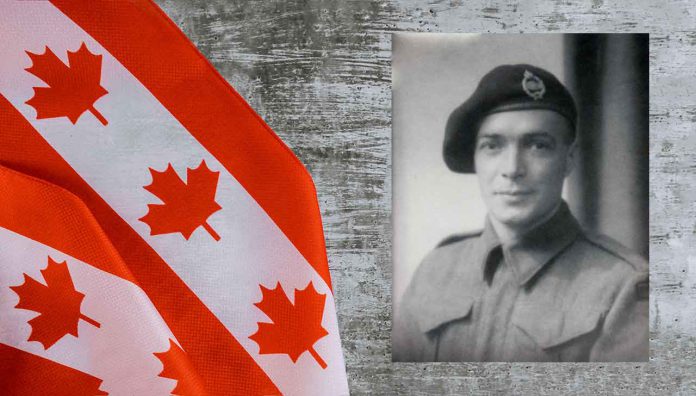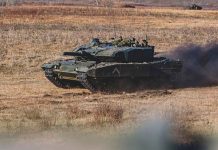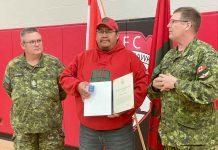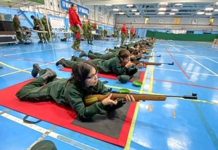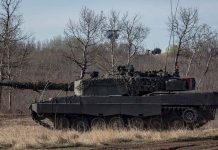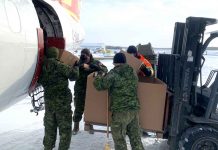The Department of National Defence and the Canadian Armed Forces have identified the grave of a Canadian soldier of the Second World War as that of Trooper Henry George Johnston.
Trooper Johnston was buried as an unknown soldier in 1945 in the Commonwealth War Graves Commission’s Mook War Cemetery in the Netherlands.
Trooper Henry George Johnston was born on May 2, 1915, in Chauvin, Alberta. He enlisted at No. 13 District Depot as a General Reinforcement in October 1943 in Calgary. After training in Ontario, he embarked for the United Kingdom on June 25, 1944, arriving on July 3, 1944. He was taken on strength by the 1 Armoured Personnel Carrier Regiment, Canadian Armoured Corps, Canadian Active Service Force, on November 12, 1944. Trooper Johnston was declared killed in action on January 17, 1945, during an attack in which his Regiment was carrying members of the Devonshire Regiment, a regiment of the British Army, as part of Operation BLACKCOCK.
“Canadian troops proudly fought alongside our Allies during the Second World War, providing key ground support to the British-led operation that pushed back enemy troops on the Roer Front along the Dutch-German border. Trooper Henry George Johnston is part of a proud legacy of Canadians who fought valiantly during the fierce battles, demonstrating great courage and character in the face of tremendous adversity. Trooper Johnston will be honoured for his service and his sacrifice will forever remain in our memory,” states Lieutenant-General Wayne Eyre, Commander Canadian Army.
The Canadian Armed Forces have notified surviving next of kin of Trooper Johnston’s identification and have provided the family with ongoing support. A headstone rededication ceremony will take place at the Commonwealth War Graves Commission’s Mook War Cemetery in Limburg, Netherlands, at the earliest opportunity.
The Canadian Armed Forces’ Casualty Identification Program fosters a sense of continuity and identity within the Canadian Armed Forces, and provides an opportunity for the family, the unit of the fallen soldier, and all Canadians to reflect upon the experiences of the men and women who made the ultimate sacrifice for their country.
Harjit S. Sajjan, Minister of National Defence says “Trooper Johnston dedicated his life in defence of peace and freedom during the Second World War. We honour him for his courage and selflessness. The service of this brave member will not be forgotten, as it continues to impact the way Canadians live today. As we approach Remembrance Day, all Canadians should appreciate that the Canadian Armed Forces’ Casualty Identification Program continues to identify the names and tell the stories of those who made the ultimate sacrifice for us. We will remember them. Lest we forget.”
“In a conflict as vast as the Second World War, it can be difficult to remember that behind every casualty was a human being with a life they left behind to serve. Events like this remind us of that. Trooper Johnston paid the ultimate sacrifice, and will finally receive the recognition he deserves. We remember him today,” states Lawrence MacAulay, Minister of Veterans Affairs and Associate Minister of National Defence
Quick Facts
- The Canadian Armed Forces’ Casualty Identification Program, within the Directorate of History and Heritage, identifies unknown Canadian service members when their remains are recovered and there is sufficient evidence to identify them by name.
- The program also identifies service members previously buried as unknown soldiers when there is sufficient historical and archival evidence to confirm the identification. When that is the case, the previously unknown soldier receives a new headstone with their name, unit affiliation, and a personal family inscription, if that is requested.
- The Casualty Identification Review Board is composed of members of the Directorate of History and Heritage, the Commonwealth War Graves Commission, the Canadian Forces Forensic Odontology Response Team, and the Canadian Museum of History.
- The Commonwealth War Graves Commission commemorates the 1.7 million Commonwealth servicemen and women who died during the two world wars. Using an extensive archive, the Commission works with their partners to recover, investigate, and identify those with no known grave to give them the dignity of burial and the commemoration they deserve.

